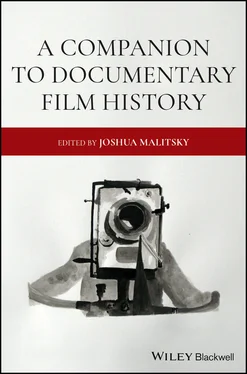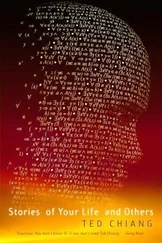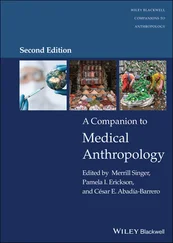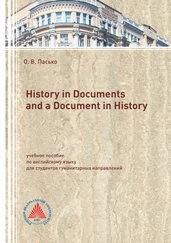9 9As a filmmaker, Matsumoto is widely known for a series of experimental documentary films he made from the late 1950s to early 1960s, including The Weavers of Nishijin (Nishijin, 1961) and The Song of Stone (Ishi no uta, 1963). Hanada's influence on Matumoto's own writing is best represented in Matsumoto (2012 [1958]).
Part II Authors, Authorship, and Authoring Agencies
Introduction: Authors, Authorship, and Authoring Agencies
James Leo Cahill
University of Toronto
Authorship and its conceptual limits have significantly shaped documentary's history, at least as it has been told in the capitalist West. In the Anglophone tradition, one need only return to a few of the primal scenes of the mode's conceptualization – John Grierson's 1926 review of Robert Flaherty's Moana in the New York Sun and his “First Principles of Documentary” of 1932–1934 – in order to trace the assertion of documentary as an evaluative category and authorship as that which divides documentaries from the supposedly “lower” forms of filmed actuality comprising the larger field of nonfiction cinema. In “First Principles” Grierson writes, “Documentary is a clumsy description, but let it stand. The French who first used the term only meant travelogue. It gave them a solid high‐sounding excuse for the shimmying (and otherwise discursive) exoticisms of the Vieux Colombier. Meanwhile documentary has gone on its way” (Grierson 1971: 146). Grierson dismissively and incorrectly attributed the French use of the term documentaire with a limited understanding rooted in travelogues and other “shimmying exoticisms” projected at places like the Théâtre du Vieux Colombier, a Parisian avant‐garde cinema directed by Jean Tedesco that was known for its eclectic and imaginative programs, and was an important supporter of historical and emergent nonfiction and documentary cinemas. 1 Recalling his famous formula of the “creative treatment of actuality” outlined in 1933 in “The Documentary Producer” (Grierson 2016: 216), Grierson reserved the term documentary for work that he believed transcended the merely descriptive nature of nonfiction materials through “arrangements, rearrangements, and creative shapings” of “natural material” that produced revelatory insights (Grierson 1971: 146). If his negative example of the Vieux Colombier aimed to foreclose an already declining exhibitor‐as‐author model where individual texts blurred into a larger program format, as well as the indulgence in “shimmying exoticisms” of various sorts, Grierson leaves no doubt to the centrality of a creative agent – an author – in the elevating work of arranging and shaping representations of reality into a form that merits the designator documentary . One recognizes here a species of the structural opposition between the “raw” and the “cooked,” which Grierson himself describes as a distinction between “lower” and “higher” categories of documentary (Lévi‐Strauss 1964; Grierson 1971: 145; Gunning 1997). Simply cranking a senseless camera could produce nonfiction footage, but even forms that require considerable technical expertise, such as animal and scientific films, rarely met the criterion of elevation for Grierson. Documentary required a considerable quantity of intentional intervention. Grierson was otherwise flexible about who might occupy the role of the authoring agent or agency: be it in the form of a “producer,” which he likens to both a schoolmaster and knee‐wife, an “artist” or “director” (Grierson 2016: 215–216), or institutions such as the Empire Marketing Board and National Film Board (discussed by Zoë Druick in her contribution to this section).
Despite Grierson's dismissals, a rather rich and polyform practice of the film documentaire had been developing in France for three decades, setting the stage for the very concerns Grierson and his cohort would alternately instrumentalize and repress in the Anglophone context. Beginning with the convenient target of France – as but a first step in a more globally minded provincialization and denaturalization of the Grierson model – an alternate genealogy of documentary emerges that also gives the author a privileged place, even if in the form of a split and multiplying subject. The ascription of the “documentary interest” and “undeniable documentary value” of films had already been made in 1898 and 1899 by the Lumière company camera operator and film archive champion Boleslas Matuszewski and the surgeon Eugène‐Louis Doyen (Matuszewski 1898: 6; Doyen 1899: 3). Doyen filmed his surgical procedures in order to have a record of his performances for his own study, for use in medical training of students, and as a contribution of historical records for the posterity of the profession, claiming that unlike other modes of documentation, films were uniquely capable of capturing and communicating a surgeon's “personality” (Doyen 1899: 2–3; Lefebvre 2004). Two camera operators – Ambroise‐François Parnaland and Clément Maurice – worked in parallel filming Doyen's procedures in order to maximize coverage and ensure redundancy in case of mechanical failures. The film strips were not cut together since a key element of the truth claims of surgical demonstrations relied upon asserting the integrity of the surgical performance. In addition to his contributions to scientific cinema, cinema pedagogy, and the conceptualization of documentary film, Doyen also inaugurated important legal precedents in France for establishing that films were authored creations and determining who counted as a film author, and as film historian Thierry Lefebvre notes, whether an author and a legal owner of a film were necessarily the same thing (Lefebvre 2004: 61).
In February 1905 the Tribunal civil de la Seine decided a suit in favor Doyen and against Parnaland in a dispute over who was the rightful author and owner of footage they produced together beginning in 1898 (Anon 1905: 76–77). Doyen objected to Parnaland's arrangement with Société générale des phonographes et cinématographes to distribute some of the film strips that he had recorded, in part because the public exhibition of such films at fairgrounds and other locations where films were shown could damage the doctor's reputation. Doyen's claim to authorship rested on having commissioned the filming and appearing as its primary subject. Parnaland's claim relied on him having recorded the footage with precise technical knowledge and a camera of his own devising. Based upon Doyen's role as the one who commissioned the films, the tribunal determined that films were works of intelligence (rather than a simple canned commodity) protected by the laws of 19–24 July 1793, establishing author's rights ( droit d'auteur ), and the laws of 11 March 1902, which extended author's rights to sculpture and architecture and set a precedent for the consideration of such “industrial arts” as photography and cinematography (Anon 1905: 76; Nesbit 1987: 236). The court also found that Parnaland violated Doyen's “image rights” by exhibiting films of his likeness without his expressed permission, and on these grounds found Parnaland and Société générale des phonographs et cinématographes culpable, and required them to pay Doyen 8,000 francs in restitutions as well as pay to have this settlement publicized in 15 papers of Doyen's choosing 2 (Anon 1905: 77).
This case helped establish an important legal precedent for films as authored works. But it would be short‐sighted and ahistorical to discount Parnaland's claims to authorship as merely frivolous or the work of an opportunistic conman – regardless of whether or not one agrees with the outcome of the case. For it is in these contesting claims to the footage that the specificity and stakes of documentary and nonfiction authorship complicates understandings imported from literary and other artistic contexts while also revealing the limiting nature of legal definition of cinematic authorship in France. It would be a mistake to consider these rulings as either the final word or a universal model for documentary film authorship: alternative models of authorship not based in a concept of possessive individualism were being developed. For example, in a 1928 interview, the filmmaker André Sauvage bristled at the term documentary due to its etymological links with the traite documentaire (bill), which he felt was too freighted with implications of functional commerce and structures of debt rather than the lofty ideals of a cinematic art. Yet his definition of the cinematic documentary as an “art of the real” that required of the filmmaker “to multiply himself, to ceaselessly forget and rediscover himself, to prodigiously decenter himself” suggests a radical understanding of the cinematic author that owes a considerable debt to the documentarian's encounters with the historical real (Anon 1928: 19–20).
Читать дальше












